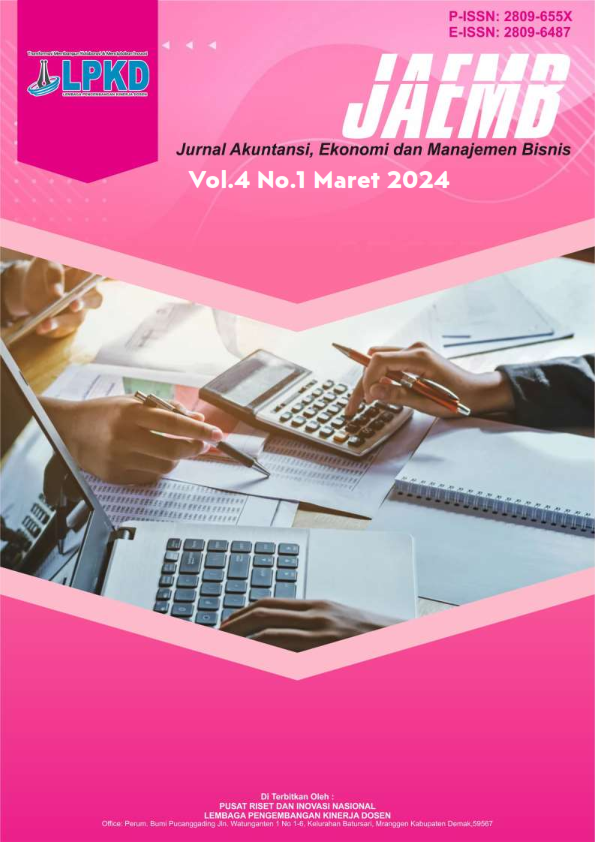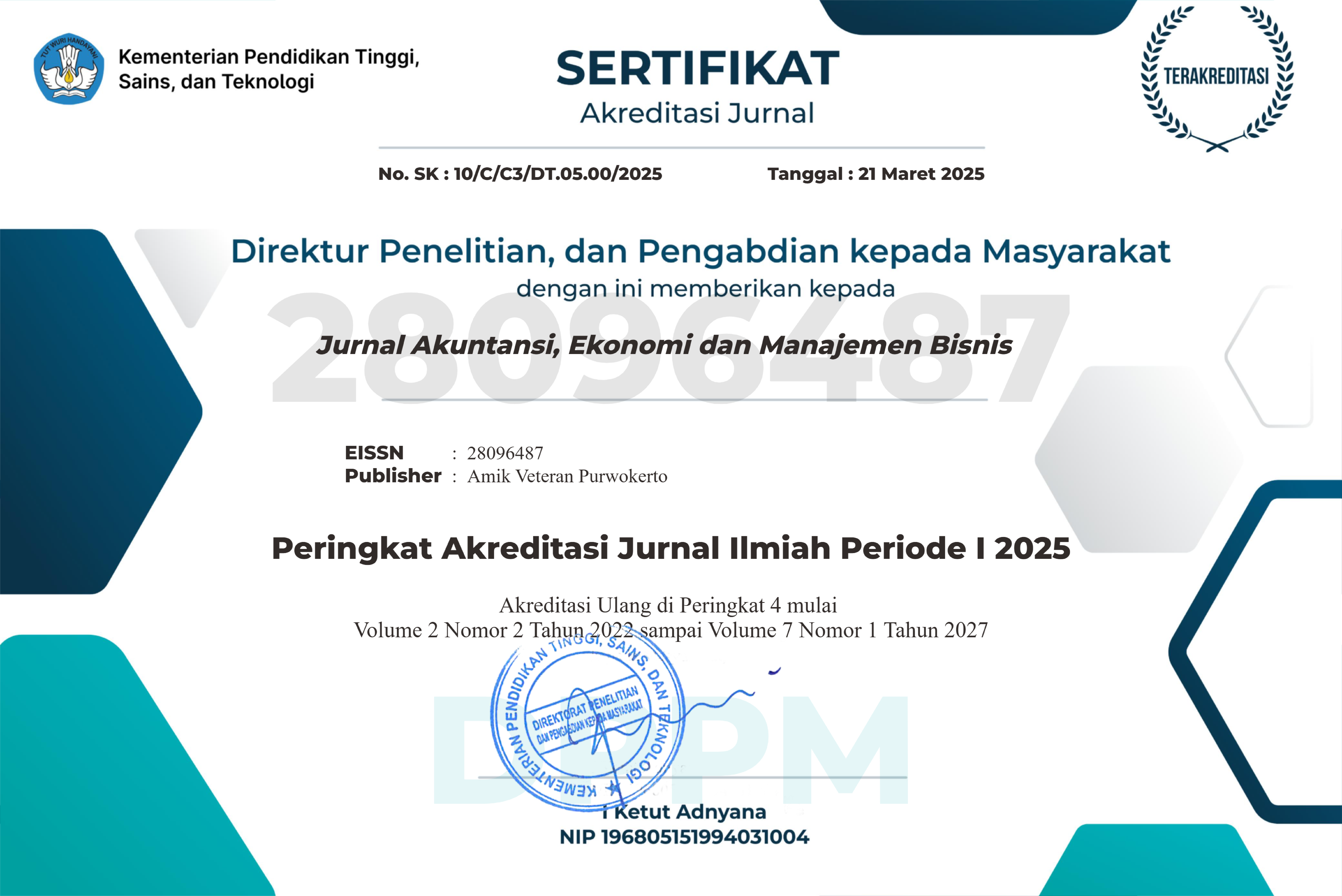The Future of Central Bank Digital Currencies (CBDCs): Implications for Monetary Policy
DOI:
https://doi.org/10.55606/jaemb.v5i1.6520Keywords:
Central Bank Digital Currency (CBDC), Monetary Policy, Fintech Adoption, Financial Stability, Public Trust, Digital Infrastructure, Policy Effectiveness, Macroeconomic GovernanceAbstract
This study investigates the implications of Central Bank Digital Currency (CBDC) implementation and fintech adoption on the effectiveness of monetary policy, emphasizing the mediating role of financial system stability and the moderating influence of public trust in central banks. The research addresses a pressing issue in the digital transformation of global finance: whether digital currencies issued by central banks can enhance policy responsiveness in increasingly cashless and decentralized economies. Using an exploratory qualitative method, this study integrates a systematic review of post 2020 academic literature and central bank reports from The Bahamas, Nigeria, and China. A conceptual framework is developed to examine causal relationships among CBDC design, fintech integration, institutional trust, and policy effectiveness. The findings reveal that CBDC impact is highly context dependent; programmable and inclusive designs, such as China’s Digital Yuan, significantly enhance monetary transmission, whereas technical and social barriers, such as in Nigeria, limit policy effectiveness. The Bahamas serves as an intermediate case where offline and identity linked digital currency supports inclusion and moderate policy gains. The analysis confirms that financial stability mediates the relationship between digital innovation and policy outcomes, while public trust either strengthens or diminishes policy reach. This research contributes to the understanding of CBDC as a policy tool by highlighting institutional, technological, and behavioral factors that determine its success. Implications suggest that policymakers must adopt a multidimensional approach that combines digital infrastructure readiness with strong governance and trust building measures.
References
R. Auer and R. Böhme, “Central bank digital currency: the quest for minimally invasive technology,” BIS Working Papers, no. 948, Jun. 2021.
R. Auer, G. Cornelli, and J. Frost, “Rise of the central bank digital currencies: drivers, approaches and technologies,” BIS Working Papers, no. 880, Aug. 2020.
M. Auer, C. Monnet, and H. S. Shin, “Distributed ledgers and the governance of money,” BIS Working Papers, no. 924, 2021.
R. A. Auer et al., “CBDCs beyond borders: results from a survey of central banks,” BIS Papers, no. 116, Jun. 2021.
M. K. Brunnermeier and D. Niepelt, “On the equivalence of private and public money,” Journal of Monetary Economics, vol. 106, pp. 27–41, 2019, doi:10.1016/j.jmoneco.2019.07.004.
L. Schilling, J. Fernández Villaverde, and H. Uhlig, “Central bank digital currency: When price and bank stability collide,” Journal of Monetary Economics, vol. 145, 2024.
W. Bian, Y. Ji, and P. Wang, “The crowding out effect of central bank digital currencies: A simple and generalizable payment portfolio model,” Finance Research Letters, vol. 43, 2021, doi:10.1016/j.frl.2021.102010.
R. A. Garratt and H. Zhu, “On interest bearing central bank digital currency with heterogeneous banks,” SSRN, Sep. 2021, doi:10.2139/ssrn.3802977.
J. Fernández Villaverde, D. Sanches, L. Schilling, and H. Uhlig, “Central bank digital currency: Central banking for all?,” Review of Economic Dynamics, vol. 41, pp. 225–242, Jul. 2021, doi:10.1016/j.red.2020.12.001.
C. Schnabel and H. S. Shin, “Money and trust: lessons from the 1620s for money in the digital age,” BIS Working Papers, no. 698, 2018.
D. R. Sanches, “Central bank digital currency: Is it a good idea?,” Economic Insights, vol. 5, no. 2, pp. 9–15, Jun. 2020.
B. Fung and H. Halaburda, “Central bank digital currencies: A framework for assessing why and how,” Bank of Canada Discussion Papers, no. 16 22, 2016.
I.Agur, A. Ari, and G. Dell’Ariccia, “Designing central bank digital currencies,” Journal of Monetary Economics, vol. 125, pp. 62–79, 2022.
H. Chen and P. L. Siklos, “Central bank digital currency: A review and some macro financial implications,” Journal of Financial Stability, vol. 60, 2022.
S. Infante et al., “The macroeconomic implications of CBDC: A review of the literature,” Federal Reserve Working Papers, no. 2022 076, 2022.
A.Oh and S. Zhang, “Informal economy and central bank digital currency,” Economic Inquiry, vol. 60, no. 4, pp. 1520–1539, Oct. 2022.
T. Keister and D. Sanches, “Should central banks issue digital currency?,” Review of Economic Studies, vol. 90, no. 1, pp. 404–431, 2023.
T. Matsui and D. Perez, “Data driven analysis of central bank digital currency (CBDC) project drivers,” arXiv preprint, Feb. 2021.
D. Chaum, C. Grothoff, and T. Moser, “How to issue a central bank digital currency,” arXiv preprint, Feb. 2021.
G. Goodell and H. D. Al Nakib, “The development of central bank digital currency in China: An analysis,” arXiv preprint, Aug. 2021.
Downloads
Published
How to Cite
Issue
Section
License
Copyright (c) 2025 Jurnal Akuntansi, Ekonomi dan Manajemen Bisnis

This work is licensed under a Creative Commons Attribution-ShareAlike 4.0 International License.








